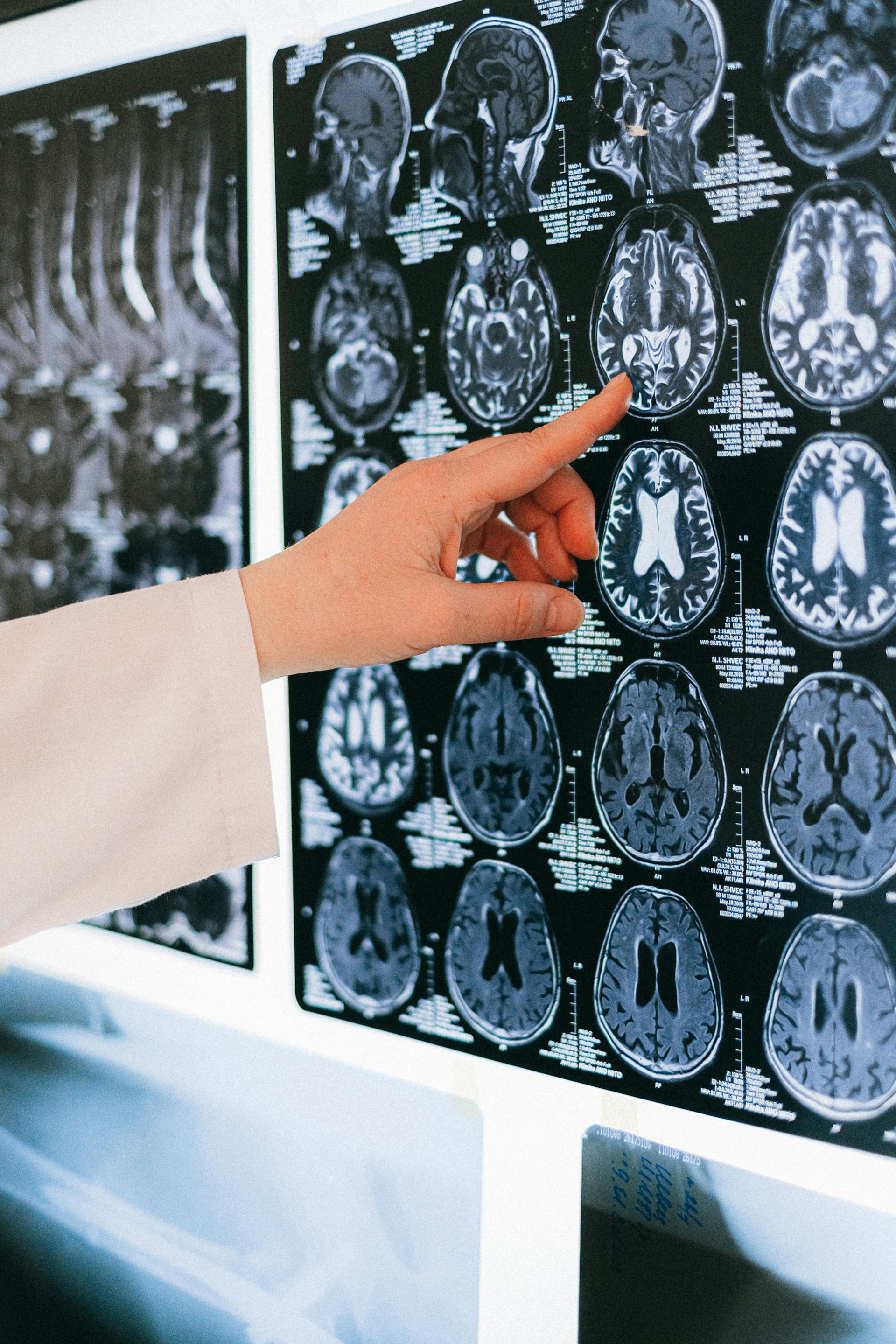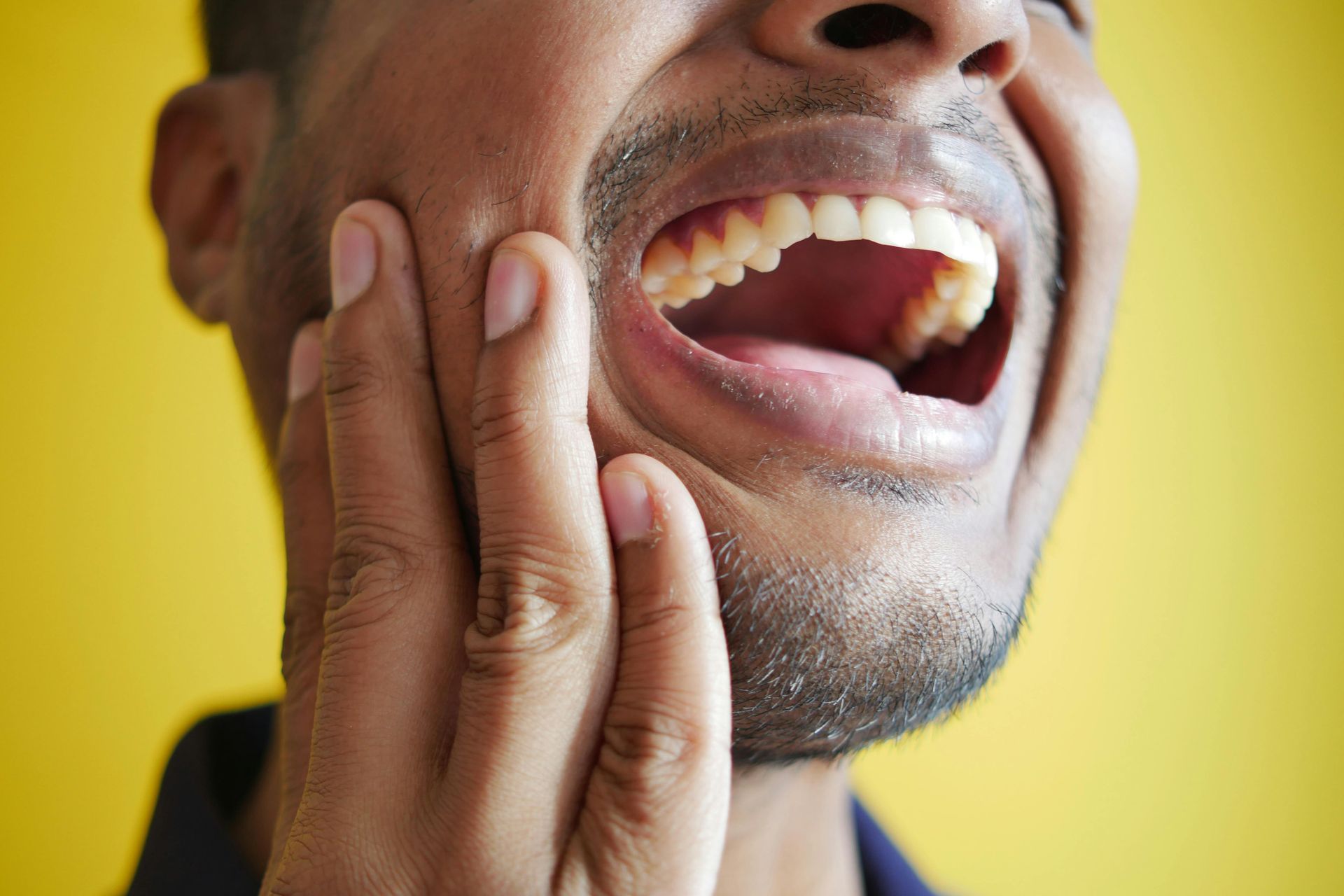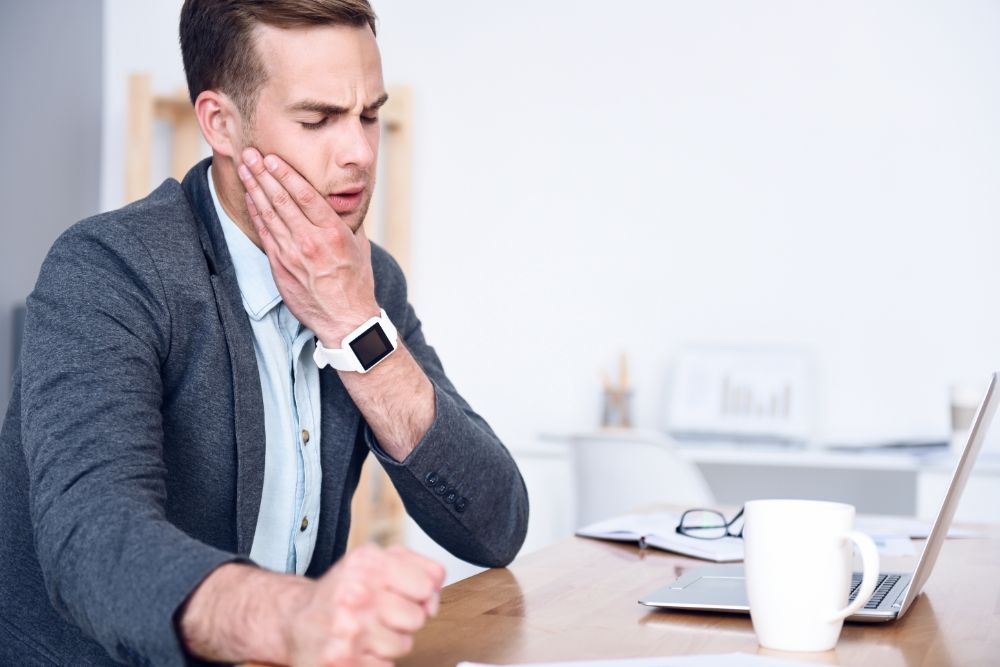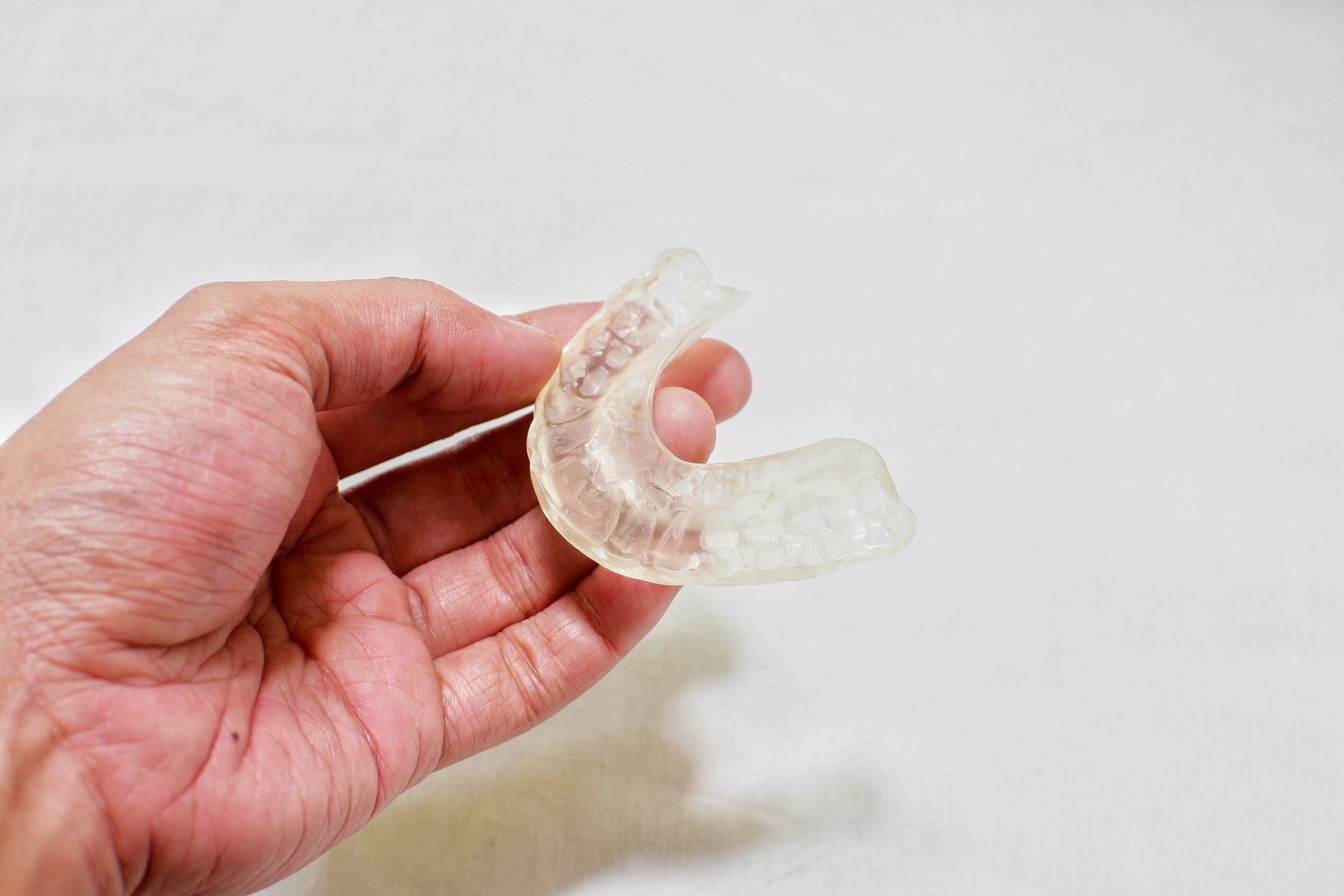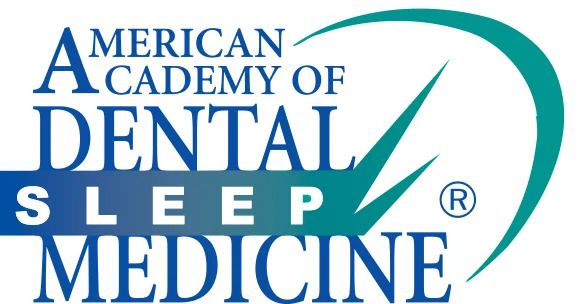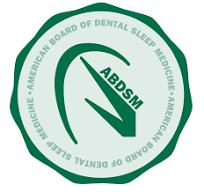Laser Therapy for Lasting Relief from TMJ Pain
A Proven, Comprehensive Approach to Treating TMJ Pain

As part of a comprehensive approach to care, laser therapy is a proven, FDA-approved option for treating both the pain associated with TMJ disorders and the disorder itself. Laser therapy uses low level photon light energy to stimulate changes in the cells and tissue in and around the TMJ area, resulting in reduced inflammation, improved jaw function, and significant long-lasting pain relief.
The pain and discomfort caused by TMJ disorders does more than make you miserable; it can actually trigger changes in your body’s cells and tissues. These changes in the cartilage, synovial fluid, and connective tissues of the TMJ–produced in response to the inflammation and mechanical stress associated with TMD–then manifest as symptoms such as pain, clicking or popping in the jaw, or limited jaw mobility.
At
Restore TMJ & Sleep Therapy in The Woodlands, we understand how frustrating and even debilitating TMJ and facial pain can be. Because of their complexity, disorders of the TMJ can be difficult to diagnose, but
TMJ specialists Dr. Katherine Phillips and Dr. YC Joseph FischerHahm of Restore TMJ & Sleep Therapy have extensive experience in successfully identifying and treating abnormalities and dysfunction in the face, mouth, and jaw. They have committed their decades-long careers and their practice to offering the best possible solutions for managing and relieving pain and discomfort associated with
TMJ disorders, relying on a
comprehensive approach that combines a variety of proven modalities for long-lasting results.
Taking a Deeper Look at TMJ Pain
The pain associated with TMJ disorders goes deeper than you think.
TMJ disorders can develop for a variety of reasons, from physiological abnormalities and jaw misalignment to injury, stress, or even genetics. They are also commonly associated with chronic conditions such as arthritis and bruxism (jaw clenching and grinding).
Regardless of the cause, however, TMJ disorders typically result in extreme, constant, and/or uneven pressure on the TMJ as well as inflammation in and around the surrounding muscles and connective tissue. Over time, this inflammation leads to a cascade of detrimental side effects at the cellular level, including:
- Damage to and/or dislocation and displacement of the TMJ disc, which serves as a cushion for the joint
- Degeneration and deterioration of the articular cartilage (the smooth tissue that covers the ends of bones and allows them to move smoothly without friction)
- Fibrosis (scar tissue) formation within the TMJ
- Inflammation in the synovial cells, fluid, and membrane lining that help lubricate the TMJ
- Nerve irritation, contributing to heightened pain perception and muscle dysfunction
- Restructuring or remodeling of the shape of the condyle (the upper part of the jaw that allows the joint to open and close)
- Cellular dysfunction and tissue breakdown in surrounding cartilage
- Bone spur development, which contributes to restricted jaw mobility
To effectively treat the pain of a TMJ disorder, it’s critical to correct the root cause of the disorder itself; otherwise, the joints, muscles, and tissue of the TMJ will continue to become inflamed and reinjured.
Laser Therapy for Lasting Relief from TMJ Pain
Laser therapy is a medication-free, FDA-approved modality that works at the cellular level to help reverse and repair the damage caused by TMJ disorders as well as correct the underlying issues to help prevent future problems. It is typically recommended in conjunction with other treatments, and can be an effective method for alleviating acute and chronic pain associated with TMD, bruxism, myofascial pain, and trigger points.
Laser therapy uses low level photon (light) energy to stimulate changes in the cells and tissues of the treated area. It does this by initiating two important processes necessary for healing and restoration–angiogenesis, which reduces cellular waste and prevents it from building up in damaged joints and muscles to cause pain; and neovascularization, which is the formation of new capillaries and other blood vessels and helps facilitate improved blood flow.
The result of these two processes is:
Reduced inflammation.
Inflammation is the primary cause of pain and discomfort associated with TMD. Laser therapy removes damaged cells; decreases “pro-inflammatory” cytokines (proteins responsible for causing pain; and interrupts the cycle of chronic inflammation.
Improved blood flow.
Better blood flow means better blood circulation and blood oxygenation—especially in the small blood vessels—both of which are necessary for the body to remove the cellular waste and inflammatory material that can build up in the tissues, muscle, and joints and cause pain.
Tissue repair.
Laser therapy decreases the amount of oxidative stress in the treatment area, improving cell survival and reducing further cellular damage. It also releases and increases the production of anti-inflammatory cytokines (proteins that promote tissue repair), improving the body’s ability to repair damaged tissue and replace it with new, healthy tissue.
Types of Laser Therapy for Treating TMJ Pain
At Restore TMJ & Sleep Therapy, we use the following types of laser therapy as part of our comprehensive approach to treating TMD and myofascial pain, as well as mild to moderate sleep apnea:
1. Photobiomodulation, or PBM, therapy, also called Low Level Laser Therapy (LLLT) or “cold laser”
PBM is a non-invasive laser therapy that delivers low-level photon (or light) energy via a specialized laser to penetrate the tissues in the treatment area and interact with compounds in the cells, triggering changes at the molecular, cellular, and tissue levels of the body. PBM gently warms and activates cells to increase circulation, improve oxygenation, reduce inflammation, and stimulate healing.
PBM sessions take between 3 and 10 minutes, and most people need between 5 and 10 sessions. Most patients experience an almost immediate relief in the intensity of their pain—within minutes—with continued long-lasting improvements in healing, pain relief, and function occurring throughout the course of therapy.
2. NightLase
NightLase is an effective and non-invasive treatment option to help treat snoring and sleep apnea, which are often related to a TMJ disorder. NightLase uses an optimized length of laser pulses to safely and gently penetrate and heat the oral mucosa tissues of the mouth and throat, stimulating collagen production and tightening the airway. With just 2 short treatments of about 15 minutes administered over two months, most patients begin to see a noticeable reduction in the effects and amplitude of their snoring, as well as the alleviation of mild to moderate sleep apnea symptoms. Some patients may even see results the first night after their first treatment, with improvements lasting for a year or more.
3. Fontona LightWalker
By promoting tissue regeneration and reducing inflammation, the Fotona LightWalker is an effective tool to aid in TMJ healing. It uses a combination of two high performance dental lasers—Er:YAG and Nd:YAG—to stimulate physiological responses that reduce pain and improve joint function.
Trust the TMJ Specialists at Restore TMJ & Sleep Therapy to Treat Your TMD Pain
Successfully treating TMJ disorders requires more than just treating the pain and symptoms; it requires a complete and comprehensive approach to care that works to correct the physiological abnormalities at the root of the problem. At Restore TMJ & Sleep Therapy, we know there is no one-size-fits-all standard solution for treating TMJ disorders and pain, and that the right treatment plan for each person is likely to include a combination of therapies, such as:
- Splint therapy
- Botox injections
- Medications
- Laser therapy
- Physical therapy
- Self-care/lifestyle changes
- Trigger point injections
The TMJ specialists at Restore TMJ & Sleep Therapy are leaders in innovative methods for treating TMJ–such as laser therapy–as well as experts in well-established modalities like splint therapy. In addition to giving you the right diagnosis and developing a treatment plan that targets both the source and the symptoms of your pain, Dr. Phillips and Dr. FischerHaham can also provide the ongoing care, monitoring, and adjustments necessary to help you get the most out of your TMJ therapy.
When it comes to treating TMJ disorders, experience matters. Schedule a consultation with Restore TMJ & Sleep Therapy today to find out if laser therapy is right for you, and get started on the path to a happier, healthier life without TMJ pain.
-2700x842-1920w.png)






